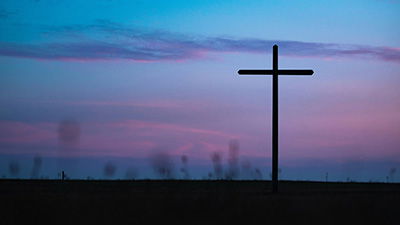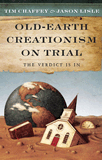The Temple Cleansing
Tim Chaffey, AiG–U.S., explains why John’s account of the temple cleansing must necessarily have been a different event from the one found in the Synoptic Gospels.
My recent article on the timing of Christ’s cleansing of the temple has generated several responses disagreeing with my conclusion that Jesus actually cleansed the temple twice—once near the start of His ministry and once near the end. Following are comments from two individuals, each promoting the notion that John described the same event as the Synoptic Gospels (Matthew, Mark, and Luke). Here's the first response:
This has got to be one of the stupidest answers ever! The reality is that the writers remembered things differently. It would be very suspicious if they were all the same, as if they got together and invented the story. The fact is nobody remember the same event the same way. And we should not expect the Bible to do so. They were inspired by the Holy Spirit, but that does not override the individuality of the writers.
Here's the second comment:
I think it's more of a stretch to say these are two separate instances rather than just two different accounts of the same event. These gospels are given in parallel and about the same events as accounts inspired by God. It's silly to think each record accounted by different individuals would record the exact same dialog and story in complete entirety. Perhaps the accounts together give use a more complete picture? I don't see these as contradictory, but instead complimentary. I think at times we Christians try too hard to prove things that don't need to be proven and at times Christians come off as too apologetic to be right. I unapologetically assume both are accurate representations of the same event.
When dealing with alleged contradictions in Scripture, we must remember several important principles. First, since the words of Scripture are God-breathed (yet still allowing the writers’ styles, vocabularies, etc. to show), there were no contradictions in the original manuscripts. Second, our task is to provide one or more plausible solutions to the difficulty. Third, we need to study the issue in detail so that our response does not create even more problems.
My first approach on this particular difficulty was to see if John was talking about the same event as the other authors. That would appear to be the easiest solution. As these two responses pointed out, the Gospel accounts are not always in chronological order. Also, they are correct that we should not expect the biblical writers to use the exact same wording when describing the same event. On these points, we are in agreement.
However, some serious problems arise if we adopt the position that these writers were simply recording the same event. This is why I proposed that John wrote about a temple cleansing near the beginning of the Lord’s ministry while Matthew, Mark, and Luke wrote about an event near the end of the Lord’s earthly ministry.
First, while John may not have been primarily concerned with chronology, he did use chronological terminology in this context, which rules out the possibility that these were the same events. John 2:13 opens John’s account of Jesus cleansing the temple. The prior events in this Gospel took place in Galilee (the calling of the disciples, the wedding at Cana), and then the scene shifts to Jerusalem in this passage. The next passage is about Nicodemus visiting Jesus at night. Although it is not specifically stated in the passage where this event took place, it was almost certainly in or near Jerusalem. Nicodemus was a member of the Sanhedrin who would definitely have been in Jerusalem during the Passover, as he was during the Lord’s final Passover (John 19:39). Keep in mind that the chapter breaks were a later insertion, so unless stated otherwise by the writer, there is no reason to assume any significant change in time or location.
The clincher on this subject comes from John 3:22–24.
After these things Jesus and His disciples came into the land of Judea, and there He remained with them and baptized. Now John also was baptizing in Aenon near Salim, because there was much water there. And they came and were baptized. For John had not yet been thrown into prison.(emphasis added)
The word translated as “these things” is the Greek word tauta, which is a plural pronoun (i.e., “these”—contrast with John 2:12, where the singular form of this pronoun, touto, is accurately translated as “this”). After what things? This must refer to at least the two previous accounts, which would be the temple cleansing and the meeting with Nicodemus. So it is after these things that Jesus went out to the Judean countryside1 and His disciples baptized “more disciples than John
[the Baptist]” (John 3:24; 4:1). John the Baptist was still alive! This means that the temple cleansing described in John’s Gospel took place before John the Baptist was executed. The temple cleansing described in the Synoptics clearly took place immediately after Christ’s triumphal entry into Jerusalem, which occurred after John the Baptist’s death (Matthew 14:1–2).2
Similarity does not necessarily equal “same-ness.”
A second major problem arises if we take the position that all four Gospel writers described the same event. After Jesus cleansed the temple and prophesied about His Resurrection, the Jews said, “It has taken forty-six years to build this temple, and will You raise it up in three days?
” (John 2:20). It’s important to recognize that these words are not recorded in the Synoptic Gospels. If they were, then there would be critical difficulties with the biblical timeline.
According to Josephus, the restoration or rebuilding of the second temple began in the eighteenth year of Herod’s reign (20 or 19 BC).3 If we add 46 years to this date it brings us to AD 27 or 28, but this is too early for the triumphal entry of Jesus. He was born around 5 or 4 BC and was “about thirty years of age
” when He began His ministry (Luke 3:23). Thirty years from his birth would be approximately AD 26 or 27, which fits nicely with the 46 years from the rebuilding of the temple. But we still need to add to this the years for his ministry.4 The Crucifixion likely occurred sometime between AD 30 and 33. The triumphal entry of Christ did not occur 46 years after the renovation of the temple started, but a few years later than that.
Although the temple cleansings were similar in nature and result, we should not automatically assume they were the same event. Remember, similarity does not necessarily equal “same-ness.” John’s Gospel includes several distinctive features not included in the Synoptic Gospels. As such, a careful look at the text reveals that the best solution to this dilemma is to recognize Jesus cleansed the temple on at least two occasions.
Footnotes
- The phrase translated as “
came into the land of Judea
” literally means “into the Judean land.
” The ESV, NIV, HCSB, and others translate it as “the Judean countryside,
” which is the meaning conveyed by the Greek words. This is because Jesus and His disciples were already in Jerusalem (John 2:23), which was in the territory of Judea. So they could not really come into the land of Judea if they were already there. The context makes it clear that Jesus and His disciples moved from Jerusalem to the countryside. - Matthew 14:1–13 explains that John died during Christ's ministry. So this happened prior to the triumphal entry.
- Josephus stated that “Herod, in the eighteenth year of his reign, and after the acts already mentioned, undertook a very great work, that is, to build of himself the temple of God, and make it larger. . . .” Josephus, The Antiquities of the Jews, 15.11.380. Jones places the eighteenth year of Herod’s reign as beginning in 20 BC. Floyd Nolan Jones, The Chronology of the Old Testament, (Green Forest, AR: Master Books, 2005), 219. Ussher places the eighteenth year of Herod’s reign in 19 BC. James Ussher, The Annals of the World, revised edition, (Green Forest, AR: Master Books, 2003), 765–766.
- There are many other timing issues that go into this calculation. We know the Lord’s ministry lasted at least three Passovers (John 2:13; 6:4; 13:1), which means it had to have been longer than two years. It could have been even longer if John omitted one or more of the Passover celebrations during Christ’s ministry. Also, John the Baptist’s ministry began in the fifteenth year of the reign of Tiberius Caesar, but this is a difficult date to fix. If we start it when he became joint ruler with his father Augustus, then the fifteenth year was around AD 26 or 27, which, once again fits perfectly with the above dates. If we start from the year Augustus died, then John’s ministry wouldn’t have started until about AD 29. The Lord’s ministry obviously began after John’s.
Recommended Resources

Answers in Genesis is an apologetics ministry, dedicated to helping Christians defend their faith and proclaim the good news of Jesus Christ.
- Customer Service 800.778.3390
- Available Monday–Friday | 9 AM–5 PM ET
- © 2025 Answers in Genesis





